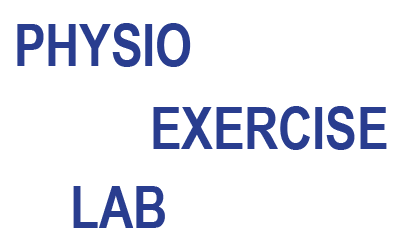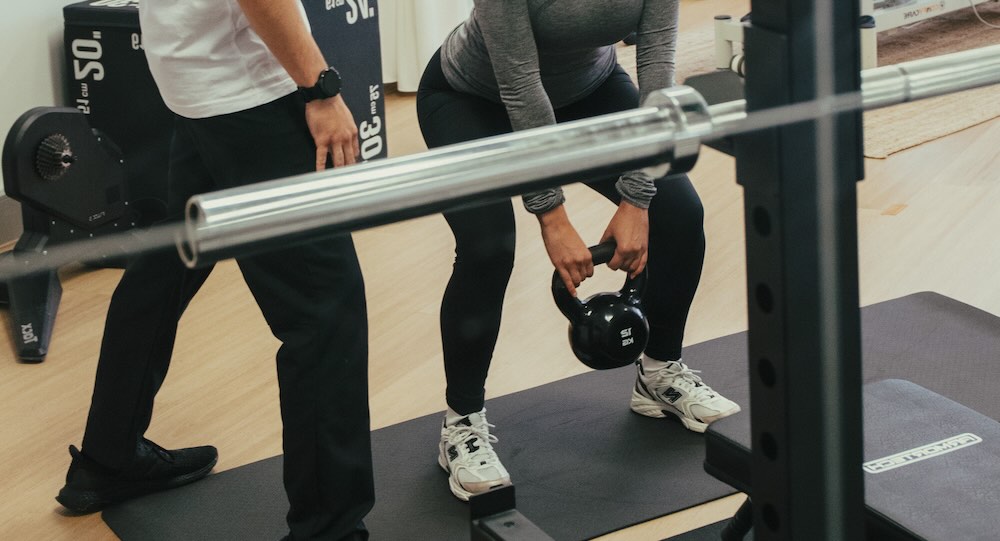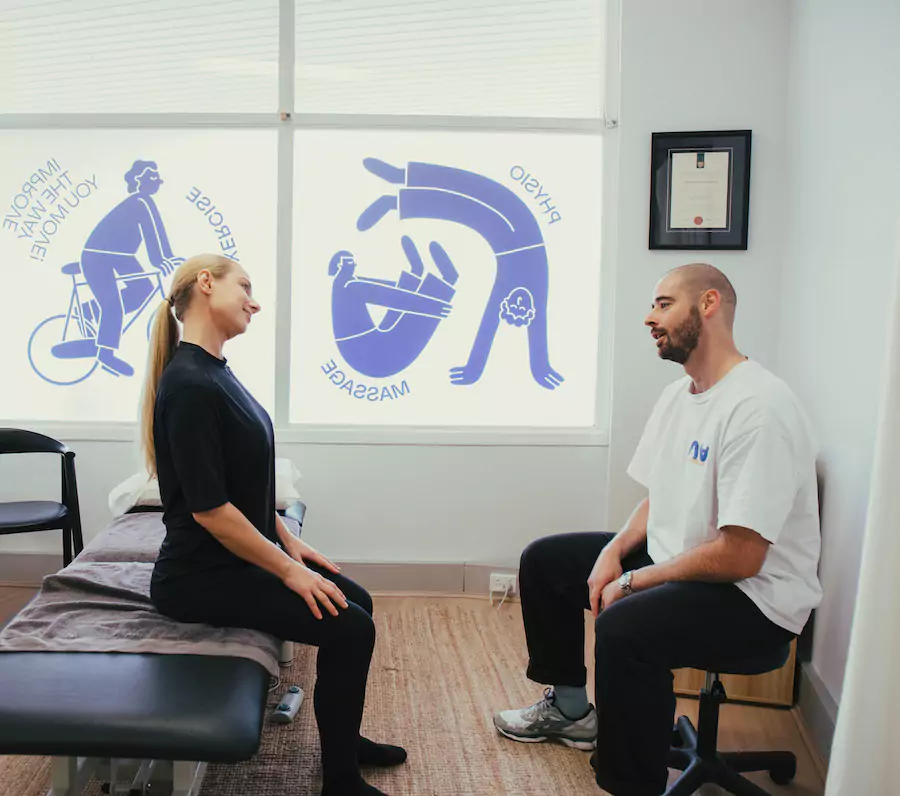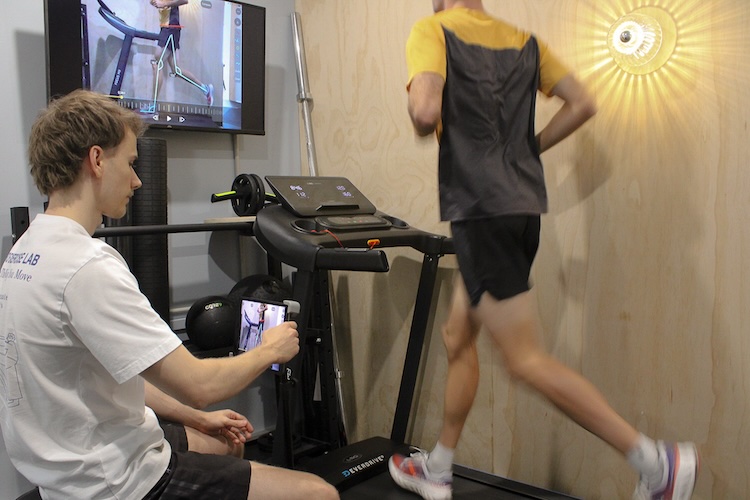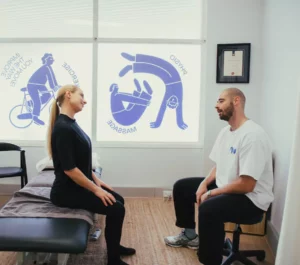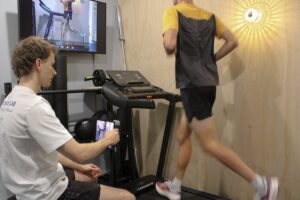Gliders, Nordic hamstring curls, and glute bridges are some of the best physio exercises for hamstring injuries. These exercises can help ease hamstring pain and tightness, improve strength, and reduce your risk of re-injury.
Hamstring strains and tears are one of the most common lower leg injuries I’ve seen in over a decade as a physiotherapist.
If you’re dealing with hamstring pain or want to work on reducing pain and tightness and preventing re-injury, the right exercises may help. Here are 9 of the best physio exercises for hamstrings that I often recommend to clients.
The 9 Best Physio Exercises for Hamstrings
- Nordic Hamstring Curl
- Arabesques (Single Leg Stiff Leg Deadlifts)
- Gliders
- Glute Bridges
- Isometric Hamstring Contraction
- Feet Elevated Bridges
- Romanian Deadlift
- Prone and Side Planks
- Walking Lunges with Trunk Rotations
1. Nordic Hamstring Curl
Purpose: My #1 recommendation for the best physio exercises for hamstring injuries is the Nordic hamstring curl. This effective exercise can reduce hamstring tightness and increase strength and mobility.
The Nordic hamstring curl is an eccentric loading exercise where a muscle is contracted as it is stretched. Eccentric loading exercises can be an effective way to get rid of chronic hamstring tightness. Decreasing hamstring tightness can ease pain and reduce the risk of injury.
The Nordic hamstring curl can help:
- Build hamstring strength
- Prevent re-injury
- Ease hamstring tightness and discomfort
- Promote increased range of motion
How to Perform:
- Start in a kneeling position (use a pad to protect your knees)
- Have your ankles held securely in place by a loaded barbell or partner
- Arms can be straight at your side or across your chest
- Slowly lower your torso toward the ground, resisting the downward movement using your hamstring muscles
- Aim to keep the movement slow and controlled and keep your hips straight and body in line
- Continue lowering your torso until you are near the ground
- Hold for 5 seconds
- Use your hands (if needed) to carefully push yourself back to the starting position
- Aim to complete 3 sets of 5 to 6 reps
Note: I warn my patients that the Nordic Hamstring exercise is harder than it looks. Start slow with 2 sets of 3 to 5 reps and gradually progress as you get stronger.
2. Arabesques (Single Leg Stiff Leg Deadlifts)
Purpose: Single leg stiff leg deadlifts are an excellent way to target the hamstrings. Possible benefits of the single leg stiff deadlifts include:
- Strengthen the hamstrings and glutes
- Improve balance
- Enhance hamstring flexibility
- Correct muscle imbalances
How to Perform:
- Stand up straight with both legs under your hips and feet about hip-width apart
- Transfer your weight to one leg, keeping a gentle bend in the knee
- With your core engaged, hinge at the hips as you lift your affected leg in the air, forming a straight line from the foot in the air to your head
- Balance for a few seconds before returning back to your original standing position
- Aim for 3 sets of 8 reps on each leg
- If desired, add weight for more difficulty
3. Gliders
Purpose: Gliders are an excellent hamstring exercise for gradually building strength and increasing range of motion. All you need for the hamstring gliders exercise is a smooth, slippery surface and a slide board, a towel underfoot, or socks.
How to Perform:
- Start in an upright position with legs slightly apart in a split stance
- Hold onto something sturdy, such as a table, for stability
- Place a glider or towel under your right foot
- With weight on your left leg, allow your right leg to slide backward (like performing a lunge)
- Concentrating on using your left hamstring, and applying a slight pressure into the ground with your right foot, slide your right foot back to the starting position as you straighten through your left knee
- Repeat 10 times before completing on the opposite side
4. Glute Bridges
Purpose: Glute bridges are one of the best hamstring physio exercises for building strength and mobility. I often incorporate this exercise into hamstring rehabilitation programs for its gentle yet effective strength-building.
How to Perform:
- Lie on your back with your feet flat, knees bent, and feet hip-width apart
- Press through your feet to lift your hips toward the ceiling, contracting your glutes at the top
- Hold the position for several seconds
- Lower back down to the starting position
- Aim to complete 3 sets of 10 reps
5. Isometric Hamstring Contraction
Purpose: Isometric hamstring contraction is a great hamstring activation starting point. Isometric hamstring contractions are a common inclusion in my hamstring physio programs. Usually one of the first exercises I prescribe.
Isometric hamstring contractions increase hamstring activation without shortening the muscle. This allows for hamstring strength and to build resulting in improved flexibility and tolerance.
How to Perform:
- Lie on your back with your feet up on a chair/bench/couch
- Dig your heel into the surface its resting on so that you feel your hamstring contract
- Hold this position for 30-45 seconds within your comfort levels
- Aim for 4 repeats of this on each leg
6. Feet Elevated Bridge
Purpose: Feet elevated bridges are an effective way to strengthen hamstrings. This move can also help improve mobility and reduce the risk of re-injury.
How to Perform:
- Lay on your back with your knees bent and feet up on a chair/bench/couch (vary your knee angle based on where you want to feel the hamstring work)
- Dig your heels into the surface they’re resting on and lift your buttock off the floor
- Lower yourself down to the floor.
- Repeat for a total of 10 times to make one set
- Aim for 3 sets total
7. Romanian Deadlift
Purpose: If I have a client with hamstring pain combined with back pain, I’ll often recommend the Romanian deadlift. This exercise puts less pressure on the lower back while still strengthening the hamstrings.
How to Perform:
- Stand tall, with feet shoulder-width apart
- Hold a barbell or lightweight dumbbells
- Keep your knees slightly bent as you push your hips back and allow the weights to slower lower toward your feet in a controlled motion
- Be sure to keep the weights close to your legs throughout this exercise and maintain a flat back
- Push hips forward and raise the barbell to return to the starting position, making a point to squeeze your glutes at the top
- Aim for 3 sets of 5 to 6 reps
8. Prone and Side Planks
Purpose: Prone and side planks aim to increase trunk control and stability. By improving trunk control in active daily exercises or sport, the hamstrings are able to work off a more stable base.
How to Perform:
- Adopt a plank position in which your elbows and feet are in contact with the ground but your torso and lower limbs are in the air. This can either be facing down or on one side
- Thinking about tightening through your lower abdominals (prone) or obliques (side) keep your hips and pelvis up so that your body makes a wooden plank like shape
- Hold for 30 to 60 seconds depending on your ability
- Slowly lower your hips and pelvis to the ground
- Repeat 3-4 times in each position
9. Walking Lunges with Trunk Rotation
Purpose: Walking lunges with trunk rotation work the hamstrings in a linear direction with a rotational perturbation. This movement occurs quite often in various sporting situations. It improves strength and stability through the trunk, hips, and hamstrings
How to Perform:
- Step forward into a lunge position with feet in a split stance slightly longer than a normal step length
- Bend both knees to allow your back knee to move towards the ground, but stop before the knee makes contact
- In this position twist your torso to face left and then right. Aim to keep your hips, pelvis, and knees straight and not turn with your trunk
- Return to a standing position, before stepping forward with the alternate foot
- Repeat 6-8 times on each leg
- Aim to perform 3 sets of this
When to Seek a Physio for an Injured Hamstring
Hamstring strains have a high risk of re-injury, making it imperative to work with a qualified physiotherapist to ensure complete recovery. If you have hamstring pain or strained, injured, or pulled a hamstring, I recommend consulting with a physiotherapist.
Hamstring physio is a vital part of rehabilitation and ensuring a full recovery. At The Physio and Exercise Lab, our comprehensive hamstring rehabilitation program includes:
- An in-depth evaluation to determine the extent of the damage, type of hamstring injury, prognosis, and location of damage
- A tailored recovery plan
- Injury prevention strategies
- Pain reduction techniques
- Strength building exercises
- Targeted exercises to improve range of motion
- Exercises and stretches to reduce hamstring tightness
- Specific exercises to prepare for your return to a certain sport or activity
- Manual therapy
My biggest advice is to get confirmation you are fully healed before resuming sports or activities. Athletes who resume sports before fully rehabilitating their hamstring are more susceptible to re-injury. Working with a physiotherapist who specialises in hamstring rehabilitation ensures you are healed and ready to safely return to sports.
Book a Hamstring Physio
Dealing with a painful or strained hamstring or chronic hamstring tightness? Book a hamstring physio appointment with one of our qualified physiotherapists to get on track to healing today.
Our experienced physiotherapists offer comprehensive physio for hamstring rehabilitation. We tailor every treatment plan to your goals, health status, and needs to support you in your recovery.
For running enthusiasts, we also offer a comprehensive video running gait analysis and musculoskeletal assessment for $150 (private health rebate applicable) to improve your form and reduce your risk of injury.
Disclaimer: This information is for educational purposes only and should not replace professional medical advice. Always consult a qualified healthcare provider before starting any new exercise programme.
